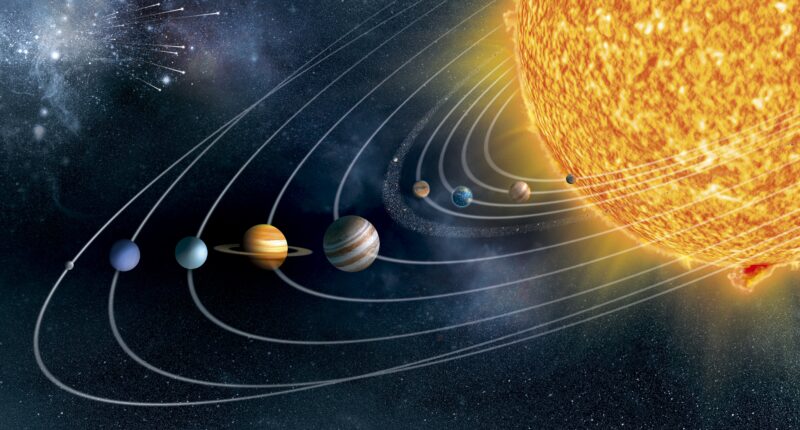STARGAZERS will be able to spot Mercury and Venus in the night skies next week, as the pair make their closest pass by Earth.
So, get your binoculars at the ready.
Mercury, our solar system‘s smallest and fastest-moving planet, is set to reach its most visible point on April 11, according to Nasa.
Although the planet will start to come into view as soon as today.
Mercury has a solid, cratered surface, much like the Moon.
The rocky planet is only visible in the sky for a few weeks every three to four months of the year.


This is because the rest of the time it gets lost in the glare of the sun.
Venus will also be viewable on April 11, appearing beside the Pleiades star cluster.
The planet a rusty color and it’s peppered with intensely crunched mountains and thousands of large volcanoes
“This pairing makes for a fun reminder that the night sky is kind of like a time machine; the farther out into space you look, the farther back in time you’re seeing,” Nasa said.
Most read in Tech
“On that night you’re seeing light that left Venus about nine minutes earlier, whereas the light of the Pleiades left those stars around 400 years ago.”
It helps to be in a rural area with little light pollution to watch the pass-by.
Astronomy apps can also help stargazers pick out the planets and nearby constellations.
But if you miss it, don’t worry.
Amateur astronomers will also have to opportunity to see close approaches of the moon with Saturn on April 15 and 16.
Best Phone and Gadget tips and hacks

Looking for tips and hacks for your phone? Want to find those secret features within social media apps? We have you covered…
We pay for your stories! Do you have a story for The Sun Online Tech & Science team? Email us at [email protected]










